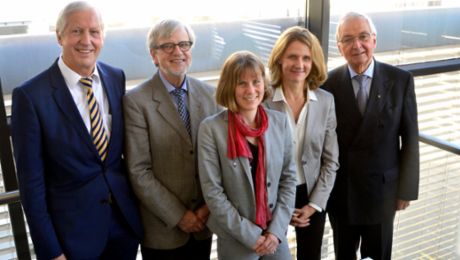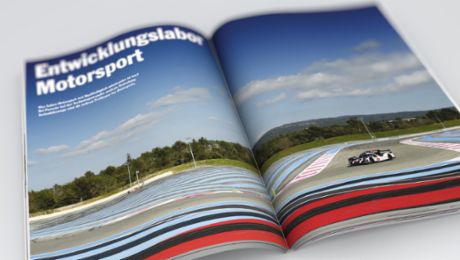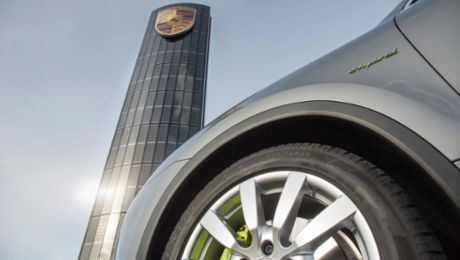Anyone wanting to function at top performance over the long term must deploy his or her strength carefully and effectively and also manage resources accordingly – this goes for top athletes as well as for Porsche. The company is therefore continuously looking for ways to improve, not only where technology is concerned but also when it comes to sustainability. "As premium supplier we want to be at the forefront in this area too and so we reviewed the topic in 2013," says Andreas Büchner, Director Politics and External Affairs. As a result an office was set up to coordinate all topics relating to sustainability. This is Porsche's contribution to the Volkswagen Group objective of becoming the most sustainable car manufacturer by 2018.
Sustainability report divided into five chapters
Part of this contribution is the first sustainability report from Porsche AG. It is a 100 page document providing information on the operating areas and objectives for sustainable action at Porsche. "The demands from external stakeholders for transparency in companies have grown considerably in the past few years," explains Büchner. They wanted to know how companies tackle economical, ecological and social challenges and how they deal with mega trends such as climate change, scarcity of resources and demographic change. The Porsche sustainability report provides answers to these questions. It is divided into five main chapters: "Economics", "Product reliability", "Environment and energy", "Employees" and "Society" and ends with detailed charts containing key figures. "Besides obligatory information it contains four magazine stories which provide readers with entertaining information about special projects at Porsche," says Dr Carolyn Hutter of Porsche's Sustainability Office.
Porsche's prime objective is sustainable growth and this will be achieved as follows: firstly, the aim is to build attractive sports cars which combine driving pleasure with efficiency in equal measure. Secondly, great value is placed on environmental orientation and energy efficiency at company locations. Thirdly, the company intends to be a committed partner in the social, education, science, culture and sport sectors. Fourthly, Porsche wants to be recognised as an excellent employer with a performance-based and socially acceptable corporate culture.
The key target groups for the sustainability report are customers and the Porsche work force. "Both of them influence the success of the company and the mastering of sustainability challenges to a considerable extent," stresses Büchner. In future, Porsche will publish its sustainability report every two years. The next one will appear in 2016. An update of the key figures will be posted on the web in 2015.
Consumption data
911 (Type 991): Combined fuel consumption: 9.0 – 8.2 l/100 km; CO₂ emission: 211 – 191 g/km
918 Spyder: fuel consumption: 3.1 l/100 km; CO₂ emission: 72 g/km; Electricity consumption 12.7 kWh/100 km
918 Spyder (Weissach package): fuel consumption: 3.0 l/100 km; CO₂ emission: 70 g/km; Electricity consumption: 12.7 kWh/100 km
Panamera: Combined fuel consumption: 10.7 – 8.4 l/100 km; CO₂ emission: 249 – 196 g/km
Panamera S E-Hybrid: Combined fuel consumption: 3.1 l/100 km; CO₂ emission: 71 g/km; Electricity consumption: 16.2 kWh/100 km




